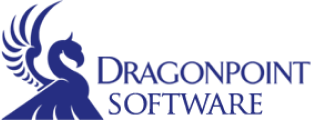Last time we checked in with Jane Smith, she was about to launch her campaign for City Council. She’d compiled all of her data into a single database and was ready to file the paperwork that would formally announce her candidacy. As I said last week, this is the equivalent of a grand opening celebration: the moment where the rubber hits the road.
Jane will use her voter database throughout her campaign, but we’ll explore a few specific examples below so you can see exactly how smart database management solutions can make life easier in a fast-paced environment.
The Goal
The goal of any political campaign is simple: winning. And while there are many variations on what it takes to win—think George W. Bush winning the Electoral College while losing the popular vote in 2000, or Bill Clinton being elected with just 43% of the vote—in this case we’ll assume that Jane needs to exceed 50% of the vote in a two way race to claim victory.
Based on past turnout, Jane has calculated that she’ll need 1,000 votes from the voters in her city to be elected. Utilizing her custom database, Jane will work to identify her supporters and opponents, persuade undecided voters, and turn her supporters out on Election Day in order to secure the 1,000 votes she needs.
The Kickoff
Since parks will be a central focus of her campaign, Jane decides to hold her campaign kickoff in a park near her home. Wanting an early show of support in the local news, Jane calls through a list of her friends and neighbors to tell them about her campaign, ask for their support, and (if they’re supportive) ask them to attend her campaign kickoff.
This is an important moment in Jane’s campaign because it has the chance to set the tone for how she will manage her data. Jane probably jotted down her call list from memory and with a little help from her phone’s contact list. But the information Jane gathers during her calls should be entered into the custom database she built before launching her campaign.
Custom databases can be powerful tools, but only if they are correctly maintained.
The Race
Throughout her campaign, Jane will add and utilize many different data sets to her preexisting database. I’ve outlined just a few of them below:
• After her announcement, Jane received calls and emails of support from many of her friends. In answering these friends’ calls and emails, Jane wisely added their names to her list of supporters in her custom database.
• Often, the same friends who are willing to donate money to your campaign are the same ones who are willing to volunteer. Jane would be smart to make both asks during her call time and track the answers she receives in her voter database.
• As Jane’s campaign gains momentum, the types of phone calls being made and the people making them will increase. In an ideal world, a candidate would talk to every voter in his or her district before Election Day, and—given the size of her community—Jane may be able to accomplish this feat. But it is very likely that volunteers will join Jane’s effort in making calls to determine who a voter is supporting, to ask supporters for money, and to recruit additional volunteers. With so many different types of calls in the field at once, it would be very easy for a voter to receive multiple calls for different purposes in the course of a single week. Thankfully, well-maintained database management solutions can help avoid this problem.
The Final Step
So what’s the point of all this data? Getting your voters to the polls!
The run-up to Election Day (including Early Voting) is known as Get out the Vote, or “GOTV” for short. It’s not C-SPAN’s younger, lesser-known brother. It’s how you win elections. I hope you’ll come back next week as we explore ways to leverage the data you gather throughout a campaign to increase your chances of victory.
Why does this matter to my business?
Just like Jane, businesses receive—or have the opportunity to receive—massive amounts of data on a daily basis. But gathering data is only half the battle. The two most important questions to ask about data are “Is it relevant?” and “Can I integrate this information with what I already know in order to make smarter business decisions?” Thankfully, DragonPoint, Inc. has experience working with businesses from many different backgrounds to answer these questions and design custom database management solutions to fit your needs.
 Guest contributor: Garrett Garner
Guest contributor: Garrett Garner






